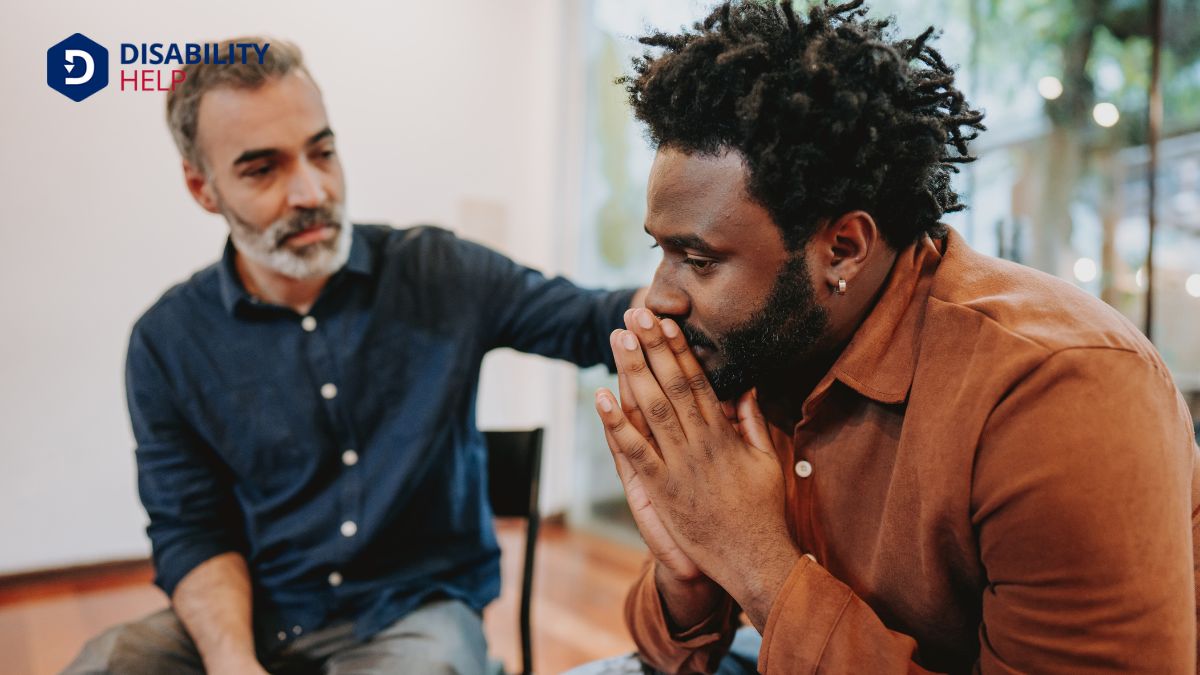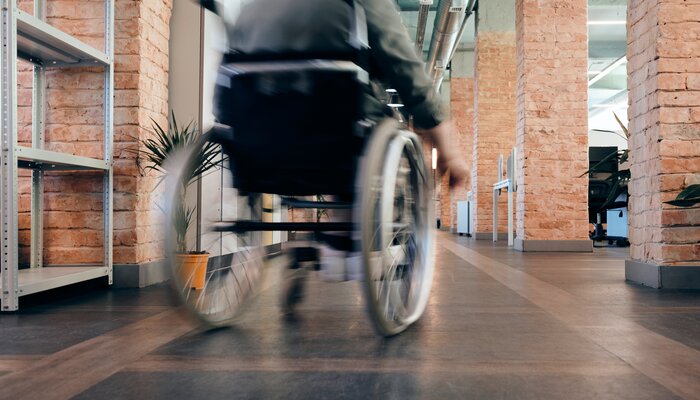To enhance our physical recovery programs, let's embrace the mind-body connection through yoga and proper nutrition. Focusing on emotional well-being with mindfulness and therapeutic support is vital. Integrated pain management techniques like acupuncture and meditation reduce pain naturally. Prioritizing self-care practices, including relaxation and balanced nutrition, plays a pivotal role. A supportive healing environment filled with positive relationships aids our progress. Regular physical activity, complemented by varied exercises, boosts flexibility and strength. Nutritional support with balanced meals and hydration fuels our recovery. If we explore these holistic tips further, we'll uncover even more benefits.
Key Takeaways
- Embrace the mind-body connection with yoga, meditation, and nutrition for holistic healing.
- Prioritize emotional well-being through mindfulness, self-compassion, and therapeutic support.
- Integrate conventional and holistic pain management methods like acupuncture and herbal remedies.
- Adopt self-care practices, including balanced nutrition, adequate rest, and gentle exercises.
Embrace Mind-Body Connection

Embracing the mind-body connection accelerates all-encompassing healing in physical recovery programs. When we acknowledge how our emotions affect our physical health, we open the door to more effective, thorough healing.
Integrated treatment approaches like yoga, nutrition, and meditation play a pivotal role in enhancing this connection. Yoga, for instance, not only strengthens our bodies but also promotes mental clarity and emotional balance. Proper nutrition fuels our bodies and minds, ensuring we have the energy and nutrients necessary for recovery.
Meditation helps calm our minds, reduce stress, and foster a sense of inner peace. This tranquility can notably impact our physical healing processes. Balancing our energy flow through practices such as acupuncture and Reiki further supports our recovery. Acupuncture stimulates specific points on the body to release energy blockages, while Reiki uses gentle touch to promote energy flow and healing.
Holistic healing means treating the whole person, not just isolated symptoms or injuries. By integrating these mind-body practices, we can create a recovery program that truly addresses all aspects of our well-being. Embracing the mind-body connection isn't just beneficial; it's essential for achieving top-notch health and complete recovery.
Focus on Emotional Well-Being
When we prioritize emotional well-being in our recovery programs, we strengthen the mind-body connection and create a more solid foundation for overall healing. Emotional well-being isn't just important; it's crucial for resilienceThe ability of individuals with disabilities to cope with and adapt to challenges and adversity. and a successful recovery process. Self-compassion and mindfulness are key strategies that promote emotional healing and mental health. By integrating these practices, we can greatly improve the effectiveness of our treatment.
Mindfulness and meditation can help us stay present and manage stress, supporting emotional well-being. Therapeutic support, such as counselingProfessional guidance to help individuals cope with emotional, mental, or social challenges, particu... or group therapyA form of psychotherapy that involves one or more therapists working with several individuals at the..., provides a safe space to explore our feelings and build resilience. Additionally, nurturing our emotional health can make our physical recovery more thorough and enduring.
Consider these emotional aspects that deeply impact our recovery:
- Experiencing self-compassion: Learning to treat ourselves with kindness and understanding during challenging times.
- Embracing mindfulness: Staying present and effectively managing stress, which aids emotional healing.
Integrated Pain Management
Integrated pain management combines conventional and holistic methods to provide all-encompassing relief and enhance recovery outcomes. By merging standard treatments with holistic approaches, we aim to address pain from various angles, ensuring a more effective and thorough healing process.
One of the key components of integrated pain management is acupuncture. This ancient technique helps alleviate pain by stimulating specific points in the body, promoting energy flow and balance. Alongside acupuncture, mindfulness practices, such as meditation and deep breathing exercises, can greatly reduce pain perception and enhance our overall well-being. These practices allow us to become more aware of our bodies, helping us manage pain more efficiently.
Holistic approaches also include energy-balancing methods and herbal remedies. Techniques like Reiki focus on restoring energy balance, while herbal solutions offer natural alternatives to traditional pain medications. Gentle physical exercises, such as yoga and Tai Chi, are incorporated to improve flexibility and strength, further supporting our healing journey.
Crucially, holistic pain management emphasizes treating the root cause of pain, not just the symptoms. By addressing the underlying issues, we can achieve lasting relief and prevent future discomfort. Integrated pain management offers a thorough pathway to healing, combining the best of both worlds for optimal recovery.
Prioritize Self-Care Practices
Self-care practices are essential for securing a successful physical recovery. By focusing on our well-being, we can set the stage for a smoother healing journey.
Let's delve into key areas that will make a significant impact.
First, mindfulness and relaxation techniques help us manage stress, which can be a major obstacle to recovery. Taking time to breathe deeply and stay present can alleviate tension and promote healing.
Additionally, proper nutrition and hydration are foundational. Consuming well-rounded meals and drinking plenty of water supports our body's natural repair processes.
Rest and sleep are equally vital. Our bodies need time to recover, and adequate sleep ensures that we're giving ourselves the best opportunity to heal.
Incorporating gentle exercises into our daily routines also helps us maintain mobility and strength without overexerting ourselves.
Here are a few self-care practices we should prioritize:
- Mindfulness and relaxation techniques: Embrace moments of calm to reduce stress and enhance healing.
- Balanced nutrition and hydration: Fuel our bodies with the nutrients needed for recovery.
Supportive Healing Environment

Creating a supportive healing environment is important for enhancing our physical recovery outcomes. When we surround ourselves with caring individuals, it promotes our emotional well-being, an essential component during the healing process. A supportive healing environment doesn't just benefit our bodies; it nurtures our minds, fostering the motivation and determination necessary for a successful physical recovery.
One of the key aspects of this environment is the presence of positive relationships. Encouragement from friends, family, and healthcare providers plays a significant role in maintaining a healing atmosphere. These relationships offer the emotional support we need to stay focused and optimistic throughout our recovery journey.
Furthermore, cultivating a nurturing environment both at home and in therapy settings can greatly aid in holistic physical recovery. This means creating spaces that aren't only physically comfortable but also emotionally uplifting. Whether it's a cozy corner in our living room or a welcoming therapy clinic, these environments help us feel safe and supported.
Holistic Rehabilitation Strategies
Holistic rehabilitationThe process of helping individuals with disabilities achieve and maintain their optimal physical, se... strategies emphasize treating the whole person by integrating mind, body, and spirit for all-encompassing healing. When we embrace the mind-body-spirit connection, we open ourselves to holistic approaches that foster complete healing and ideal physical recovery. By balancing our energy flow through integrated treatment plans, we can achieve remarkable results.
Techniques like yoga and meditation help us center our minds and strengthen our bodies, while acupuncture can relieve pain and restore balance. Nutrition is equally essential; nourishing our bodies with the right foods supports our overall well-being and recovery.
- Imagine the peace of a serene yoga session, where every breath aligns your body and mind.
- Visualize the calm that washes over you during meditation as stress melts away.
Long-Term Wellness Maintenance
Let's focus on long-term wellness maintenance by emphasizing consistent physical activity and robust nutritional support systems.
We need to incorporate regular exercise to keep our bodies strong and resilient. Coupled with a balanced diet, these practices help us sustain our well-being well beyond the initial recovery phase.
Consistent Physical Activity
Maintaining consistent physical activity is vital for sustaining long-term wellness after recovery. Regular exercise helps us improve our strength, flexibility, and overall physical health. By incorporating diverse activities like walking, yoga, or swimming, we can promote holistic well-being and keep our routines interesting and engaging.
Setting achievable fitness goals is essential to staying motivated on this journey. When we track our progress, we're able to see how far we've come, which can be incredibly encouraging. It's important to remember that every step, no matter how small, brings us closer to our goals.
Physical activity doesn't just benefit our bodies; it also boosts our mood, reduces stress, and enhances our overall quality of life. Embracing a variety of exercises ensures we work different muscle groups and prevent burnout. Let's not forget the emotional rewards we gain from staying active.
Feeling stronger and more capable each day
Experiencing the joy of movement and freedom
Building confidence and resilience through perseverance
Nutritional Support Systems
Proper nutrition forms the backbone of our long-term wellness maintenance in physical recovery programs. By focusing on balanced meals, we can greatly improve our energy levels, aid in tissue repair, and support overall health during recovery.
Including a variety of fruits and vegetables ensures that we get essential vitamins and minerals, which are essential for the body's healing processes.
Lean proteins, such as chicken, fish, and legumes, play a crucial role in muscle repair and growth. They provide the necessary building blocks for our bodies to recover efficiently.
Whole grains, like brown rice and oatmeal, offer sustained energy and important nutrients that help regulate our bodily functions.
Hydration is another key element. Drinking enough water supports cellular function, joint health, and overall well-being. It helps transport nutrients to our cells and remove waste products, making sure our recovery process is smooth and efficient.
Frequently Asked Questions
What Is a Holistic Approach to Physical Wellness?
A well-rounded approach to physical wellness means we focus on the connection between the mind, body, and spirit. We treat the whole person, not just symptoms, using practices like yoga, meditation, and emotional support to guarantee thorough healing.
What Is the Holistic Model of Recovery?
The inclusive model of recovery treats the whole person, addressing physical, emotional, mental, and spiritual aspects. We focus on interconnectedness and underlying causes, using complementary therapies like acupuncture, yoga, and mindfulness for thorough, sustainable healing.
What Is a Holistic Approach to Care and Recovery?
A holistic approach to care and recovery means we address physical, mental, emotional, and spiritual needs. We integrate therapies like acupuncture, massage, and nutrition, focusing on balancing energy and enhancing overall well-being for the best healing.
What Is the Holistic Approach to Healing the Body?
We embrace a holistic approach to healing by integrating physical, mental, emotional, and spiritual health. We treat root causes, not just symptoms, using practices like acupuncture, nutrition, and mindfulness to enhance the body's natural healing processes.
Conclusion
In our journey toward physical recovery, we've explored seven holistic tips that emphasize the mind-body connection, emotional well-being, integrated pain management, self-care practices, a supportive healing environment, holistic rehabilitation strategies, and long-term wellness maintenance.
By embracing these principles, we're not just healing our bodies but nurturing our whole selves. Let's commit to these practices and support each other in achieving sustained wellness and lasting recovery.
Together, we can thrive.






